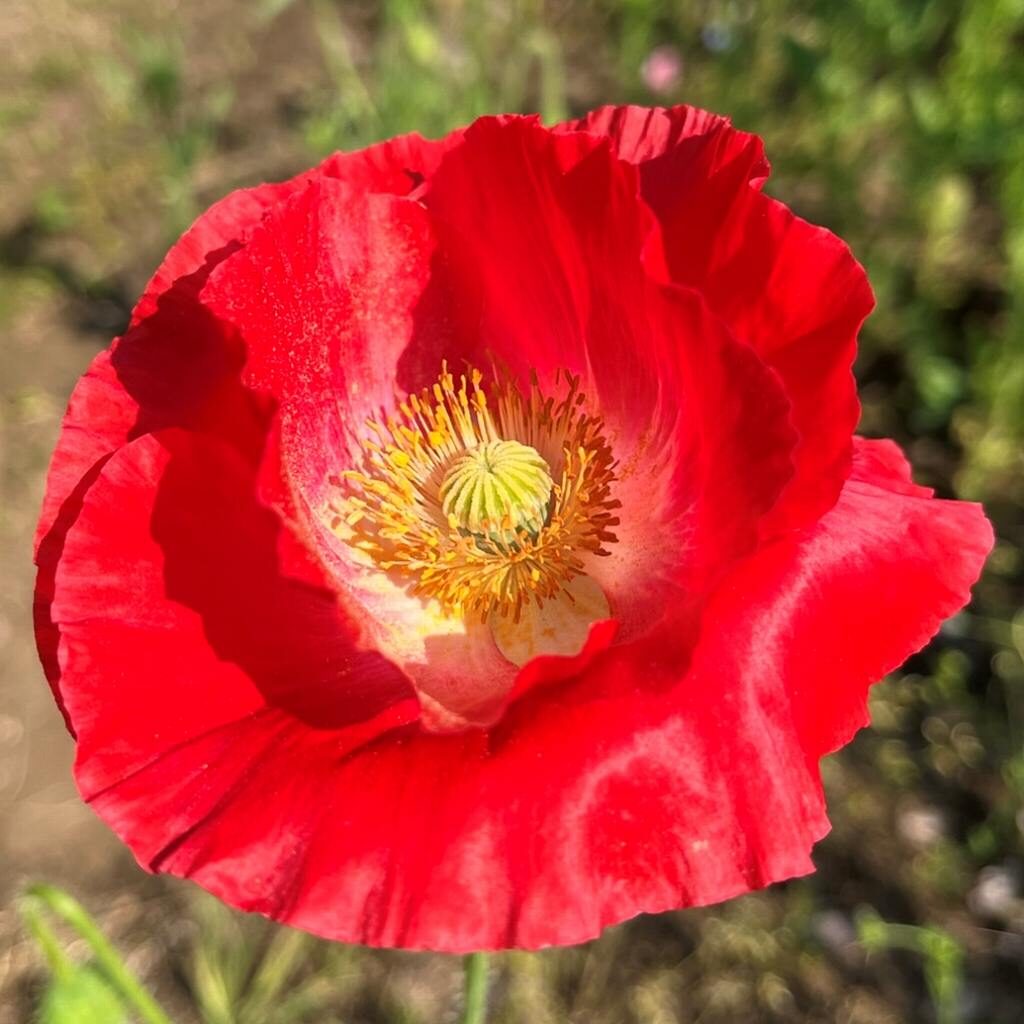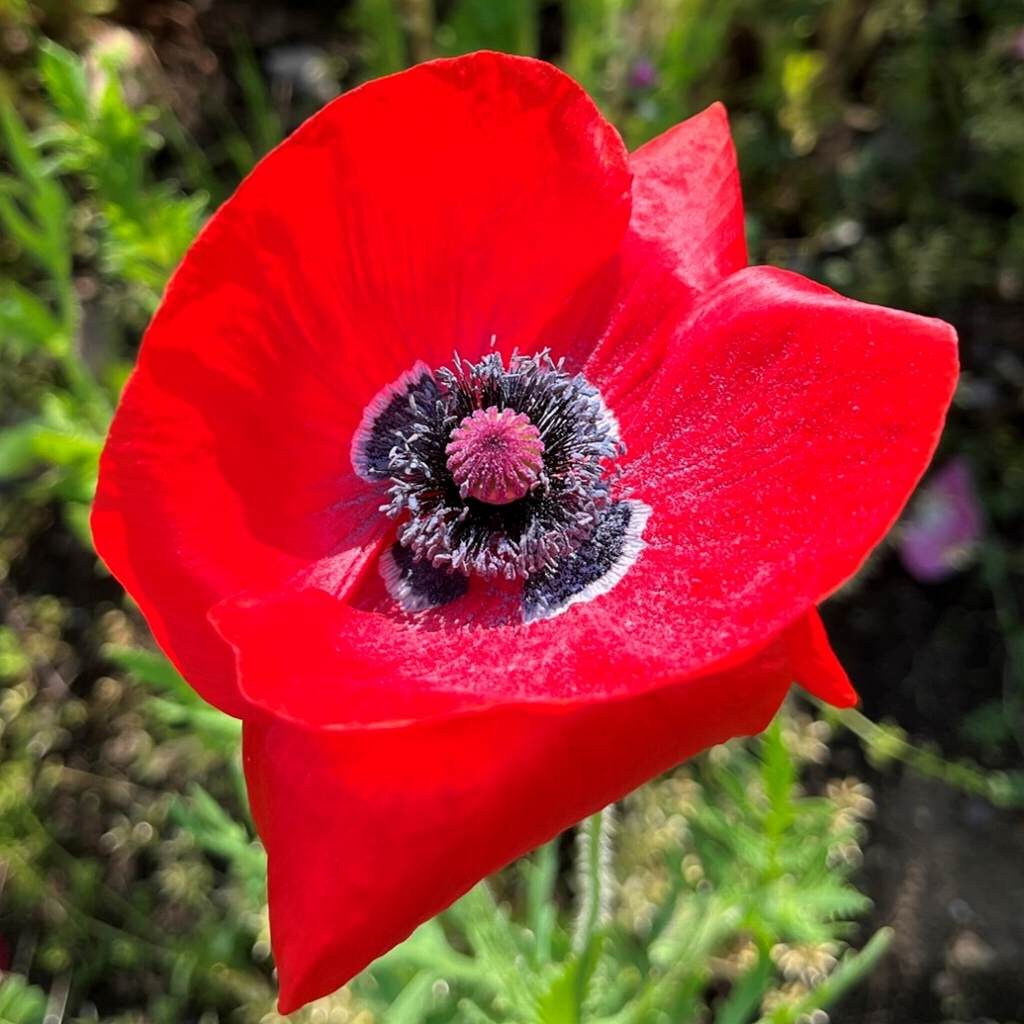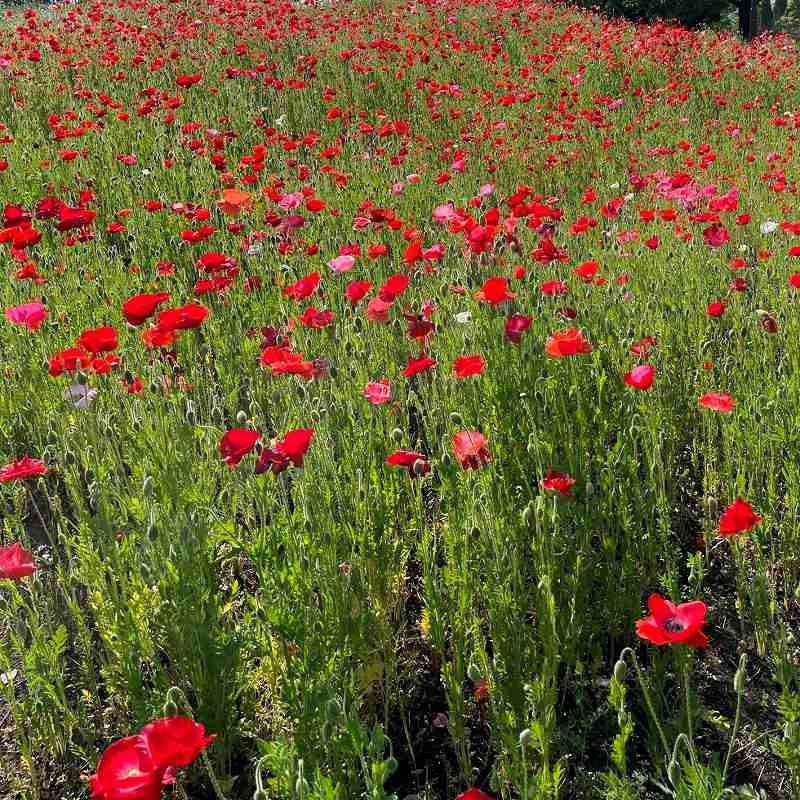ヒナゲシは花弁がごく薄い紙細工のようで一重咲きも八重咲きも華奢な造り。花言葉は「慰め」「労り」「思いやり」「陽気で優しい」です。
The corn poppy is like a paper craft with very thin petals, and both single-flowered and double-flowered flowers are delicate. The flower language is “comfort,” “labor,” “compassion,” and “cheerful and gentle.”
【仮名】ヒナゲシ, グビジンソウ
【和名】雛芥子, 雛罌粟, 虞美人草
【英名】Corn Poppy, Poppy
【学名】Papaver rhoeas
【誕生】02/ 23, 05/ 29, 06/ 15, 08/ 03
【開花】04, 05, 06, 07月
【花色】White, Pink, Red, Purple, Yellow, Orange









ヒナゲシ
ヒナゲシの生態
ヒナゲシはケシ科の1年草。原産地は欧州中部で、日本へは江戸時代に渡来しました。日当たりのよい乾燥地を好み、種子だけで旺盛に増殖。同属異種の「ケシ」は体内の乳液に麻薬成分を含む一方、ヒナゲシは含みません。花言葉は「慰め」「労り」「思いやり」「陽気で優しい」。
ヒナゲシの形態
ヒナゲシは地際に広がるロゼット状の葉と葉の間から花茎が直立。その先端に毛の生えた蕾が下向きに着き、花が咲くときに上を向きます。花弁はごく薄い紙細工のようで、一重咲きも八重咲きも華奢な造り。全体的に粗毛が密生し、葉に深い切れ込みが入るところもケシと違います。
ヒナゲシの名前
ヒナゲシの和名は「小さな芥子」という意味。芥子(カイシ)は種子が似ているカラシナのことで、その読みが転じて「ケシ」になりました。もう一つの和名は果実が容器の罌に、種子が粟に似ているから。英名は「小麦畑のケシ」という意味で雑草が改良されて園芸種になりました。
ヒナゲシの属名
ヒナゲシの属名「パパヴェル」はラテン語の「パパ」に由来。パパは子ども用の「粥」のことです。ケシ属の乳液には催眠作用があり、子どもを寝かしつけるため、粥に混ぜて食べさせたから。また、花弁が紙のように薄いので、古代の紙「パピルス」に由来するという説もあります。
ヒナゲシの別名
ヒナゲシの別名「虞美人草」は中国の楚漢戦争期に実在した「虞妃」に由来。虞妃は聡明で美しく、秦を滅ぼした楚の武将、項羽の寵愛を受けます。しかし、項羽は後に前漢の初代皇帝となる劉邦に敗れて戦死。その後を追って亡くなった虞妃の墓所には翌年、美しい花が咲きました。
ヒナゲシの異種
ヒナゲシの同属異種「ナガミヒナゲシ」は1961年に国内で確認された新しい外来種ですが、今では各地で群生。大量の種子をまき散らして爆発的に繁殖する一方、周囲に植物の生育を強く阻害する物質を放出することから「生態系に大きな影響を与える植物」として警戒されています。
Corn Poppy
Corn poppy is an annual plant of the poppy family. It originated in central Europe and came to Japan during the Edo period. Prefers sunny dry areas and grows vigorously with only seeds. The same genus and heterogeneous “Opium poppy” contains narcotic components in the milky lotion in the body, but corn poppy does not contains. The flower language is “comfort,” “labor,” “compassion,” and “cheerful and gentle.”
The flower stalk of the corn poppy stands upright between the rosette-shaped leaves that spread near the ground. Hairy buds reach their tips downwards and face upwards when the flowers bloom. The petals are like very thin paper crafts, and both single-flowered and double-flowered flowers are delicate. It is different from poppy in that coarse hair grows densely on the whole and deep cuts are made in the leaves.
The Japanese name for corn poppy means “small poppy”. Kaishi is a mustard greens with similar seeds, and its reading has changed to “Keshi: poppy”. Another Japanese name is that the fruit resembles a container and the seed resembles millet. The English name means “poppy in the wheat field” and the weeds have been improved to become a cultivar.
The genus name “Papaver” of the corn poppy is derived from the Latin word “Papa”. Papa is a “porridge” for children. The poppy emulsion has a hypnotic effect, and it was mixed with porridge to put the child to sleep. Another theory is that the petals are as thin as paper, so they are derived from the ancient paper “papyrus”.
Another name for the corn poppy, “Gubijinsou” is derived from “Yui Fei,” which actually existed during the Chu-Han War in China. Yui Fei is wise and beautiful, and receives the favor of Xiang Yu, the warlord of Chu who destroyed Qin. However, Xiang Yu was killed in action after being defeated by Liu Kun, who later became the first emperor of the Western Han. The following year, beautiful flowers bloomed in the graveyard of Yui Fei, who died after that.
The Papaver dubium, a heterogeneous species of the same genus, is a new exotic species that was confirmed in Japan in 1961, but it is now clustered in various places. While it sprinkles a large amount of seeds and proliferates explosively, it releases substances that strongly inhibit the growth of plants around it, so it is being watched as a “plant that has a great impact on the ecosystem”.


